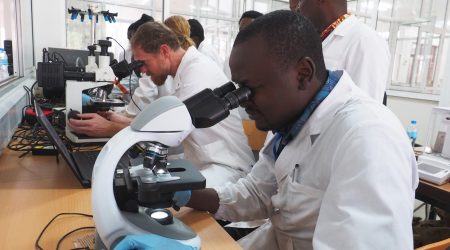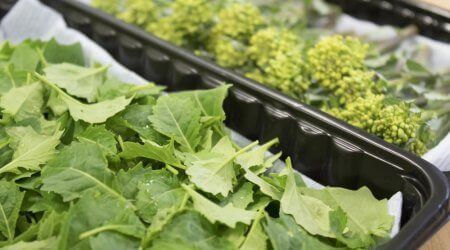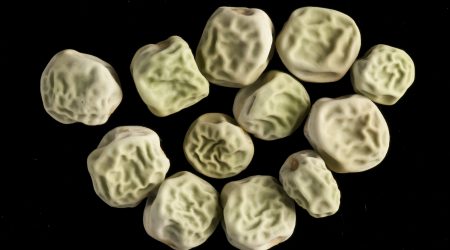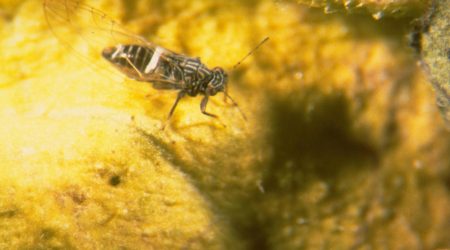Five years on from the discovery of ash dieback disease in Britain and the future of the tree lauded as the ‘Venus of the Woods’ remains in the balance
An epidemic on the scale of ash dieback could have seen the iconic ash wiped from our landscape and into folklore.
Fortunately, Britain’s third most common tree species seems destined to avoid the worst possible outcome and remain part of our much-loved woodlands. This can be largely attributed to the genetic diversity that exists in the ash population with up to 5% of trees having good resistance to the Hymenoscyphus fraxineus fungus that causes ash dieback (pictured above: a resistant tree next to a susceptible tree).
One outcome of an epidemic such as ash dieback is that the host and pathogen, over the course of successive generations, reach an equilibrium that alters the ecology of the host but fails to exterminate it.
Said Professor James Brown, Head of Crop Genetics at the John Innes Centre.
“We know that the fungus is a very aggressive pathogen in Europe, and we know that on ash species native to East Asia it reproduces prolifically but is not a destructive pathogen there. So one of the questions is ‘What is likely to happen to this disease in Europe and Britain specifically?’ And to answer that we need to understand how natural selection operates in the fungus.”
Symptoms of ash dieback are premature shedding of leaves at the top of the crown, small necrotic spots and lesions on stems and branches and perennial cankers on branches.
The first European cases of the pathogen were recorded in 1992 in Poland and by 2012 it had spread through most of the continent, including Britain. Based on what is known about the epidemic and the scale of infection, Dr Joan Webber at Forest Research has estimated that the fungus could have been in this country for around 15 years before it was discovered in natural woodland by John Innes Centre scientist Dr Anne Edwards in Ashwellthorpe Woods, Norfolk.
Recent research by scientists at John Innes Centre and collaborators at Forest Research has revealed how different sources of the invasive fungus have influenced its spread and proliferation across Britain.
Their study compared pathogen diversity in British ash trees infected from two distinct sources: some woodlands had been planted with imported saplings that were already infected with the ash dieback fungus; whereas other ancient woodlands were infected by the wind-borne spores, which the dieback fungus produces in profusion, carried on the wind from the continent.
“We’ve found there is considerable genetic diversity in the two types of population,” said Professor Brown. “What our results show is that the disease would have arrived in Britain via wind-borne spores, but its spread beyond the east coast of England would have been much slower without the imports.”
Dr Elizabeth Orton, a Postdoctoral Scientist who is working on the project, said her research highlights the importance of preventing further spread of new genetic variants of the dieback fungus from East Asia into Europe.
– Dr Elizabeth Orton
“This would prevent more diverse, possibly more pathogenic strains of dieback reaching Europe because we’ve shown their descendants can come to the UK as wind-borne spores.” Professor Brown added, “For such a policy to be effective, disease controls need to be implemented at a continental scale not just by individual countries.”
In the next stage of their research, Dr Orton and Professor Brown are studying how natural selection is acting on the dieback fungus in British ash woods. They aim to predict whether the fungus will remain highly aggressive, or will evolve to achieve co-existence with its host population.
“The work we are doing will help us to understand how quickly the ash will be restored as a keystone species in the British landscape and at what level it will be restored,” said Professor Brown. “Will it become, like the elm, a small hedgerow shrub, or will it become, once again, an important large tree with a lifespan of hundreds of years?”










